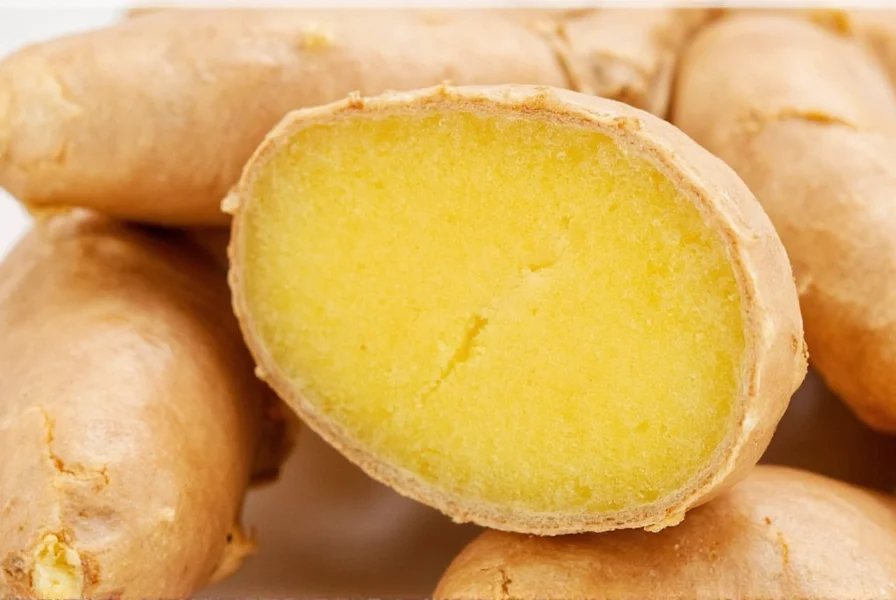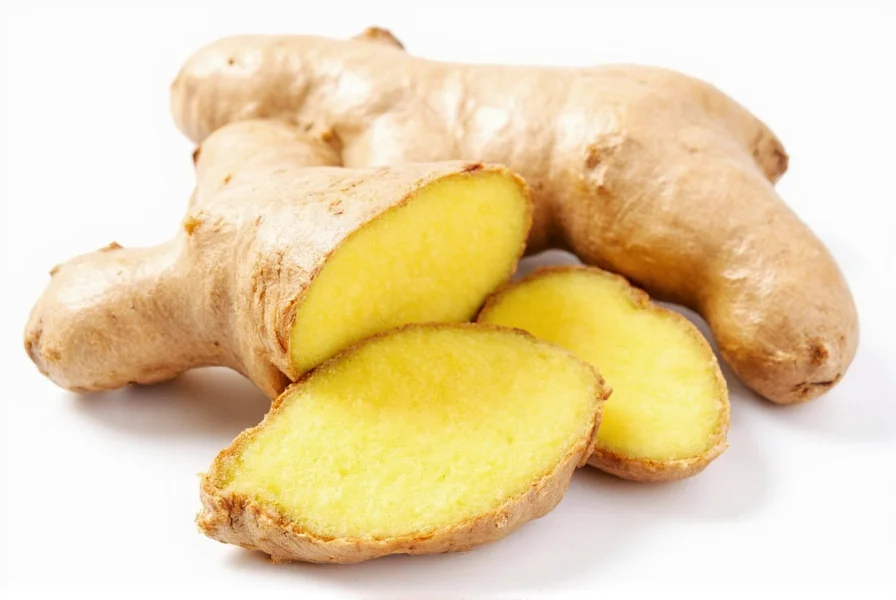For centuries, traditional medicine systems have utilized ginger as a natural remedy for pain and swelling. Modern science now confirms what ancient healers observed—ginger contains potent bioactive compounds that interact with the body's inflammatory processes. This article examines the scientific evidence behind ginger's anti-inflammatory effects, optimal consumption methods, and practical applications for managing inflammation.
Understanding Inflammation and Ginger's Active Components
Inflammation represents your body's natural defense mechanism against injury and infection. While acute inflammation serves a protective purpose, chronic inflammation contributes to numerous health conditions including arthritis, heart disease, and metabolic disorders. The challenge lies in managing excessive or persistent inflammation without compromising the body's essential protective functions.
Ginger (Zingiber officinale) contains over 400 distinct chemical compounds, with gingerols being the most extensively studied for their anti-inflammatory effects. When ginger is dried or heated, gingerols transform into shogaols, which demonstrate even stronger anti-inflammatory activity. These compounds work by:
- Inhibiting the production of pro-inflammatory cytokines like TNF-α and IL-6
- Blocking the COX-2 enzyme pathway (similar to how NSAIDs work, but through natural mechanisms)
- Reducing oxidative stress that contributes to inflammatory processes
- Modulating NF-kB signaling, a key regulator of inflammation

Scientific Evidence: What Research Says About Ginger for Inflammation
Multiple clinical studies provide compelling evidence for ginger's anti-inflammatory benefits. A comprehensive review published in International Journal of Preventive Medicine analyzed 14 randomized controlled trials and concluded that ginger supplementation significantly reduced inflammatory markers compared to placebo.
| Study | Participants | Results |
|---|---|---|
| Osteoarthritis Trial (2021) | 120 adults with knee OA | 2g ginger daily reduced pain scores by 30% and inflammatory markers by 25% after 12 weeks |
| Exercise-Induced Muscle Pain (2019) | 34 athletes | 1.6g ginger daily decreased muscle pain by 25% and accelerated recovery |
| Rheumatoid Arthritis Study (2020) | 60 RA patients | Ginger extract reduced disease activity scores and CRP levels significantly |
While the evidence is promising, researchers note important limitations. Most studies use concentrated ginger extracts rather than culinary amounts, and optimal dosing varies across conditions. Additionally, ginger appears most effective for mild to moderate inflammation rather than severe inflammatory conditions.
How Much Ginger Should You Take for Inflammation?
Determining the right ginger dosage depends on your specific needs and how you consume it. Research suggests these effective amounts:
- For general inflammation prevention: 1-2 grams of fresh ginger daily (about 1-2 thumb-sized pieces)
- For osteoarthritis or joint pain: 500mg-2g of standardized ginger extract daily
- For acute muscle soreness: 1-1.5g taken before or after exercise
Consuming ginger with black pepper (which contains piperine) can enhance absorption of its active compounds by up to 200%. For those wondering does fresh ginger have more anti-inflammatory properties than dried, research indicates dried ginger contains higher concentrations of shogaols, which may offer stronger effects for certain inflammatory conditions.

Ginger Compared to Other Anti-Inflammatory Options
Many people wonder how ginger stacks up against other popular natural anti-inflammatories. When evaluating ginger vs turmeric for inflammation, both demonstrate significant benefits but work through slightly different mechanisms:
- Ginger: Particularly effective for muscle pain, osteoarthritis, and digestive inflammation. Works faster for acute symptoms.
- Turmeric (curcumin): More potent for systemic inflammation and autoimmune conditions, but requires fat and black pepper for optimal absorption.
For those considering pharmaceutical options, ginger doesn't replace prescription anti-inflammatories for severe conditions but may serve as a complementary approach with fewer side effects. Unlike NSAIDs which can cause gastrointestinal damage with long-term use, ginger generally demonstrates excellent safety even at higher doses.
Safety Considerations and Potential Side Effects
Ginger is safe for most people when consumed in food amounts or moderate supplement doses. However, certain individuals should exercise caution:
- People taking blood thinners (ginger has mild anticoagulant properties)
- Those with gallstone disease (ginger may increase bile production)
- Individuals scheduled for surgery (discontinue 2 weeks prior)
- Pregnant women (limit to culinary amounts, avoid high-dose supplements)
Most side effects are mild and include heartburn or mouth irritation, particularly with raw ginger. If you're wondering can you take too much ginger for inflammation, the answer is yes—excessive consumption (more than 4g daily) may cause digestive discomfort. Always consult your healthcare provider before using ginger therapeutically if you have underlying health conditions or take medications.
Practical Ways to Incorporate Ginger for Inflammation
Understanding the best way to consume ginger for anti-inflammatory benefits makes a significant difference in effectiveness. Here are evidence-based methods:
- Fresh ginger tea: Steep 1-2 tablespoons grated ginger in hot water for 10 minutes. Add lemon and honey for enhanced benefits.
- Cooking applications: Add grated ginger to stir-fries, soups, or smoothies (cooking doesn't destroy active compounds).
- Supplements: Choose standardized extracts providing 5% gingerols for consistent dosing.
- Topical application: Some find relief using ginger-infused creams for localized joint pain.
Consistency matters more than single large doses. Daily consumption produces better results than occasional high doses. For those exploring how long does it take for ginger to reduce inflammation, most studies show measurable effects within 4-6 weeks of regular use.
Conclusion: Ginger's Role in Inflammation Management
The scientific evidence supporting ginger for inflammation is robust and growing. While not a cure-all, ginger represents a valuable component of a comprehensive approach to managing inflammation naturally. Its effectiveness for conditions like osteoarthritis, muscle pain, and general inflammatory markers makes it worth incorporating into your wellness routine.
Remember that ginger works best as part of a holistic strategy that includes a balanced diet, regular exercise, and stress management. For chronic inflammatory conditions, consult with a healthcare professional to develop a personalized plan that may include ginger alongside other evidence-based approaches.
Frequently Asked Questions
How long does it take for ginger to reduce inflammation?
Most clinical studies show measurable reductions in inflammatory markers within 4-6 weeks of consistent daily use. For acute conditions like muscle soreness, effects may be noticeable within 24-48 hours. The timeframe varies based on the form of ginger used, dosage, and individual factors including metabolism and the specific inflammatory condition being addressed.
What's the difference between fresh and dried ginger for inflammation?
Dried ginger contains higher concentrations of shogaols, which demonstrate stronger anti-inflammatory effects than the gingerols predominant in fresh ginger. However, fresh ginger offers additional enzymes and volatile oils that provide complementary benefits. For therapeutic purposes targeting inflammation specifically, dried ginger or standardized extracts may provide more potent effects, while fresh ginger offers broader digestive and immune support.
Can ginger replace anti-inflammatory medications?
Ginger should not replace prescribed anti-inflammatory medications without consulting your healthcare provider. While research shows ginger has significant anti-inflammatory properties, it generally provides milder effects than pharmaceutical options. For mild inflammation or as a complementary approach, ginger can be valuable, but severe inflammatory conditions typically require medical treatment. Always discuss incorporating ginger with your doctor, especially if taking blood thinners or other medications.
Does ginger work better than turmeric for inflammation?
Ginger and turmeric work through different mechanisms and may be more effective for different types of inflammation. Ginger shows stronger evidence for muscle pain and osteoarthritis, while turmeric (curcumin) demonstrates greater effectiveness for systemic inflammation and autoimmune conditions. Many researchers recommend using both together, as they have complementary effects and may enhance each other's absorption and efficacy when consumed with healthy fats and black pepper.
What's the best time of day to take ginger for inflammation?
For chronic inflammation management, spreading ginger intake throughout the day maintains more consistent blood levels of active compounds. Many people find taking ginger with meals reduces potential digestive side effects. If using ginger for exercise-related inflammation, consuming it 30-60 minutes before activity and again within 2 hours after shows the best results in studies. There's no single 'best time' as effectiveness depends more on consistent daily intake than specific timing.











 浙公网安备
33010002000092号
浙公网安备
33010002000092号 浙B2-20120091-4
浙B2-20120091-4